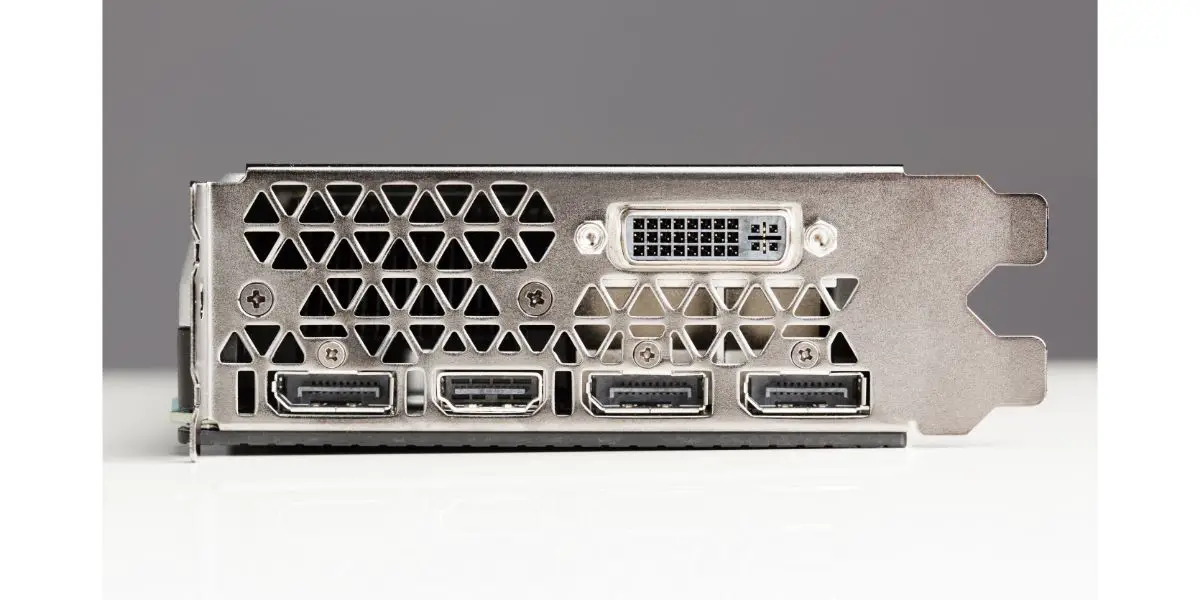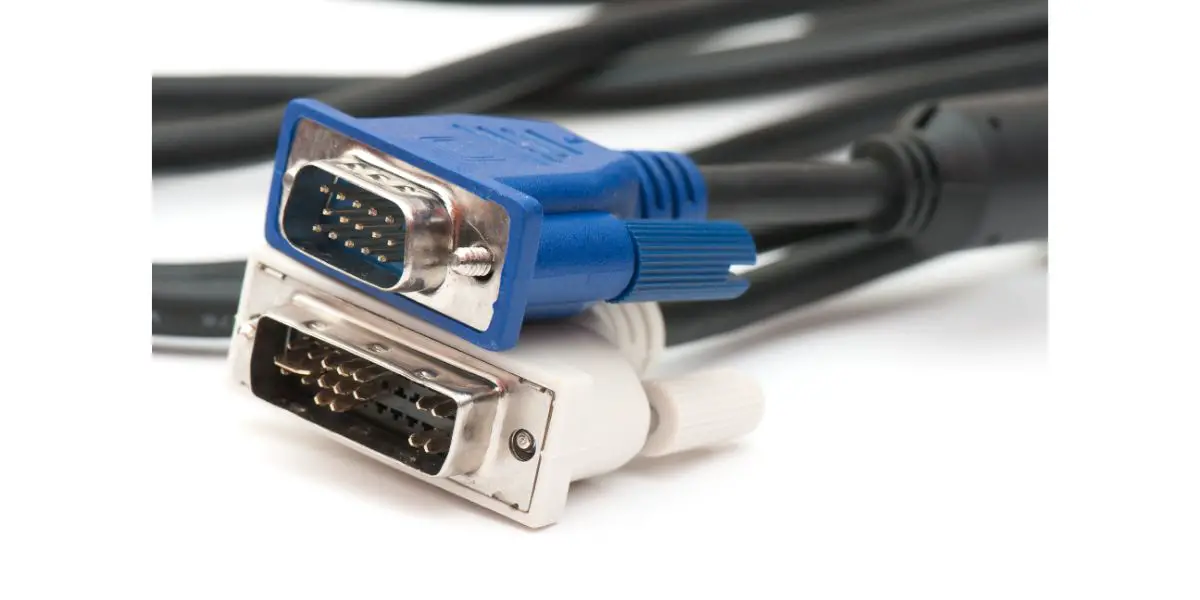Disclaimer: This post may contain affiliate links, meaning we get a small commission if you make a purchase through our links, at no cost to you. For more information, please visit our Disclaimer Page.
Despite how fast technology advances, the latest computers still have older interfaces, such as DVI ports. Even though DVI monitors are no longer manufactured or sold, some modern computers are compatible with this legacy port—but why?
Table of Contents
DVI on Graphics Cards Is Being Phased Out
DVI on graphics cards is being phased out, but don’t expect it to suddenly disappear off the market soon. DVI will likely be phased out within this decade just as VGA was, and it seems that finding a GPU with a DVI port is slowly becoming more difficult.
The truth is that DVI monitors are still circulating the tech market. A large proportion of users do not have the means (or motivation) to spend more money to get their hardware upgraded to the latest monitors and GPUs. As such, it can take up to a decade for the “phasing out” to be complete.
In fact, if you were to look at the best graphic cards in today’s market, you probably won’t find a DVI port.
So, when will exactly DVI be completely phased out? It’s difficult to make an exact prediction, but it will likely happen as monitors with resolutions higher than 1080p become the norm. This is slowly happening, but 1080p is still the most common resolution out there.
Why DVI Is Becoming Obsolete
If you’re a gamer with a high FPS monitor (above 60), or if your gaming setup includes a 1080p monitor, DVI is still a good choice. This is because DVI works well with 144hz monitors.
However, you’ve probably heard that HDMI is better than DVI. What are the fundamental differences between the two that make DVI worth phasing out?
DVI Can’t Handle 4K
If your gaming setup includes a 4K monitor, connecting via a DVI port is pointless, as it doesn’t support this resolution. You can connect via DisplayPort or HDMI, both of which are readily available on the latest graphics cards.
Experts predict that, over time, 4K monitors will be the norm. When that happens, you can expect no more legacy DVI ports on graphics cards.
Although Blu-Ray video is at a resolution of 1080p, DVI does not support the encryption methods used in Blu-Ray.
DVI Doesn’t Transmit Audio
As I’ve mentioned earlier, HDMI can transmit audio and video together. Unfortunately, DVI cannot transmit audio, even when using a dual-link cable. If you don’t already know the difference between a dual-link cable and a single-link cable, the basic difference is speed. Dual-links are almost twice as fast.
Dual-link cables enable DVI ports to transmit a higher resolution (2560 x 1600) but do not transmit audio. This means you’ll need extra cables when gaming or watching movies on your home setup.
DVI Doesn’t Support G-Sync or FreeSync
G-Sync and FreeSync were developed by Nvidia and AMD, respectively, to reduce screen tearing, stuttering, and input lag in video games.
These technologies sync the minimum and maximum refresh rate of the monitor to that of the graphics card. This can result in a much smoother experience for gamers, and they only work with HDMI and DisplayPort cables.
Not every monitor with HDMI or DisplayPort connections is automatically compatible with G-Sync or FreeSync. If you want a monitor with this feature, make sure you look for it in the product description.
What’s the Difference Between VGA and DVI?
As VGA has already become an obsolete feature, you might have thought that it is very similar to DVI. However, there is a stark difference between the two, which is why GPUs can still include this legacy port.
VGA is an analog interface, while DVI is a digital one. Most VGA supports up to 640×480 and 60 Hz, but some newer VGA cables can support up to 1080p. DVI supports up to 1080p and 144 Hz.
As you’d expect, VGA’s analog port was phased out because there is very little room for analog systems in today’s digital computers.
Adapting DVI to VGA
You can connect a VGA cable to your DVI port if you have the relevant adaptor. This is a much simpler process than you’d expect. Adaptors are commonly sold in online stores and tech stores.
It’s worth noting that using an adaptor is only capable of converting VGA to DVI, and not vice versa.
When to Use a DVI Cable
I’ve already discussed how this port is becoming obsolete. As such, there are only a few situations where DVI ports are needed. For example, watching an old video from a device that only supports VGA.
Here are a few reasons you might find that you need a DVI port, which is also the reason why graphics card manufacturers might still add these legacy ports to GPUs purposefully.
Fixing Old Monitors
Old monitors and screens are still in use all over the world. Fixing these screens might require a DVI port because they are incompatible with HDMI graphics cards. Monitors working at 1080p can connect to DVI ports for fixing as well. An adaptor could solve the issue, but not all adaptors work well.
Gaming on Old Monitors
The main reason for DVI still being on graphics cards is compatibility with older hardware. If you have an old high-resolution monitor that is still working just fine and only supports DVI, there’s no reason to throw it away.
Some old monitors support high refresh rates, and DVI supports up to 144 Hz. Anything above 60 Hz is considered a high refresh rate, and gamers greatly value this feature.
Of course, HDMI is just as good at outputting 144 Hz and can reach much higher numbers. 240 Hz monitors are becoming more common, and they only support HDMI and DisplayPort.
Final Thoughts
While HDMI is a better option for most users, DVI monitors are still available today. As long as they are still in use, there will be a demand for compatibility and manufacturers will include this legacy port. DVI will eventually be phased out, but it will take time before DVI ports are completely obsolete.


